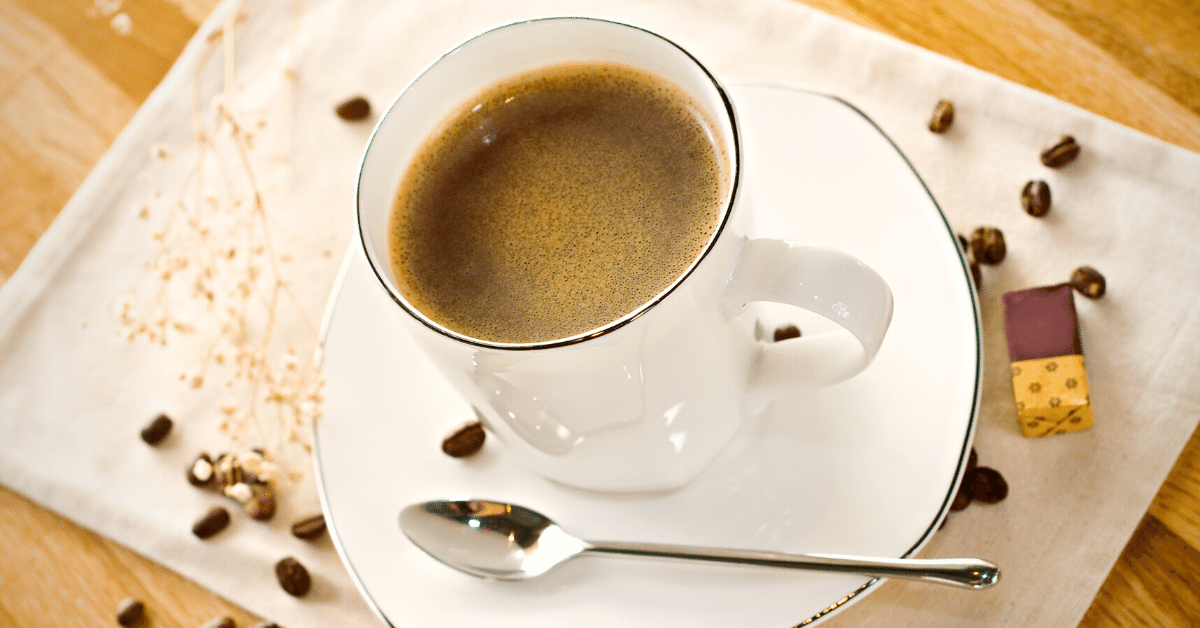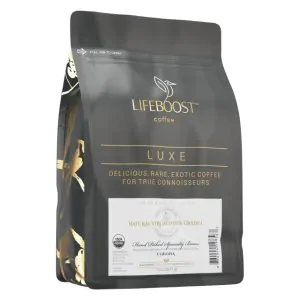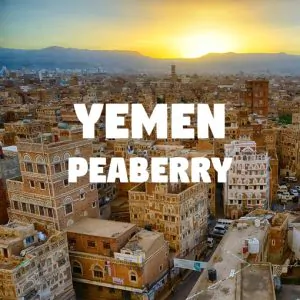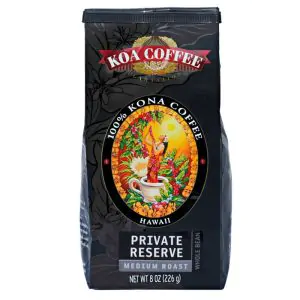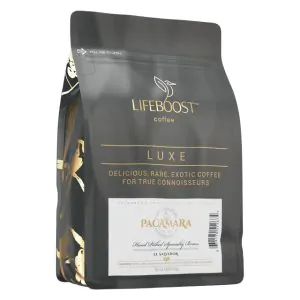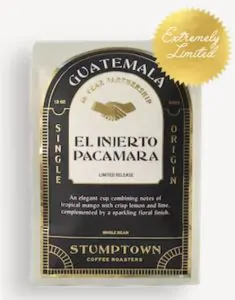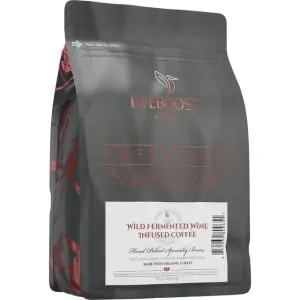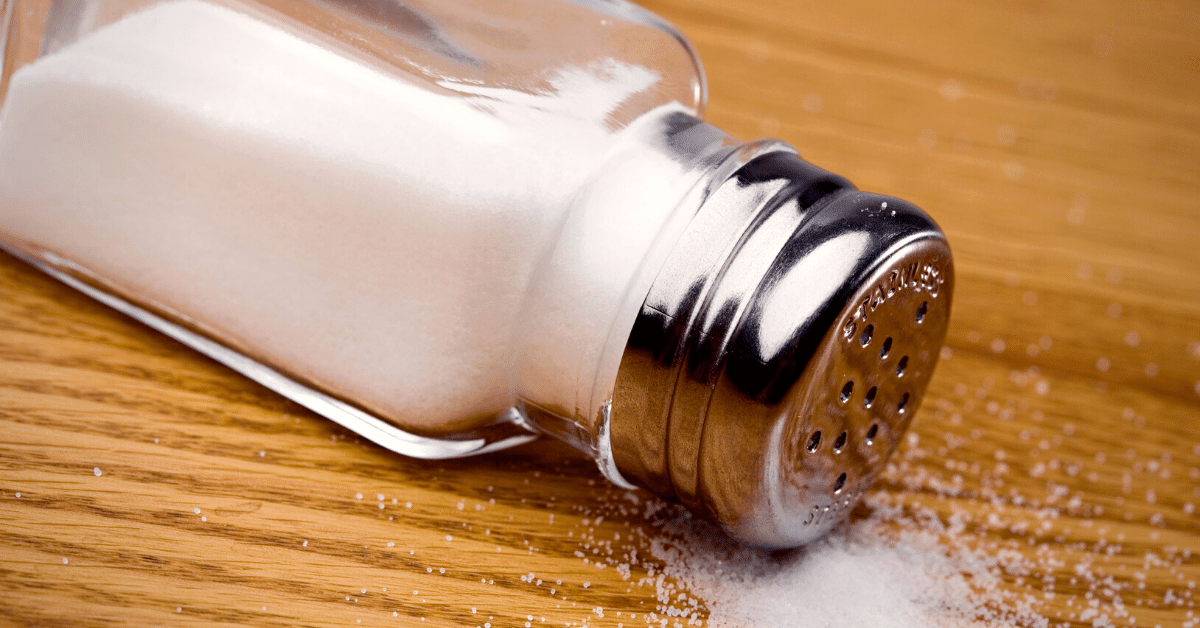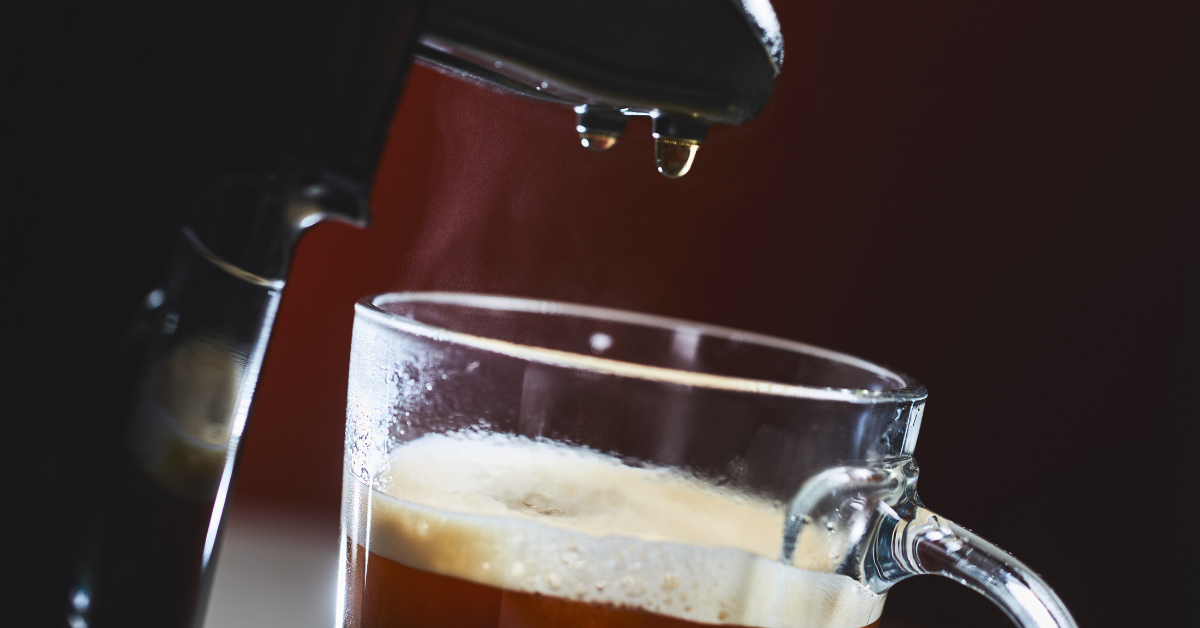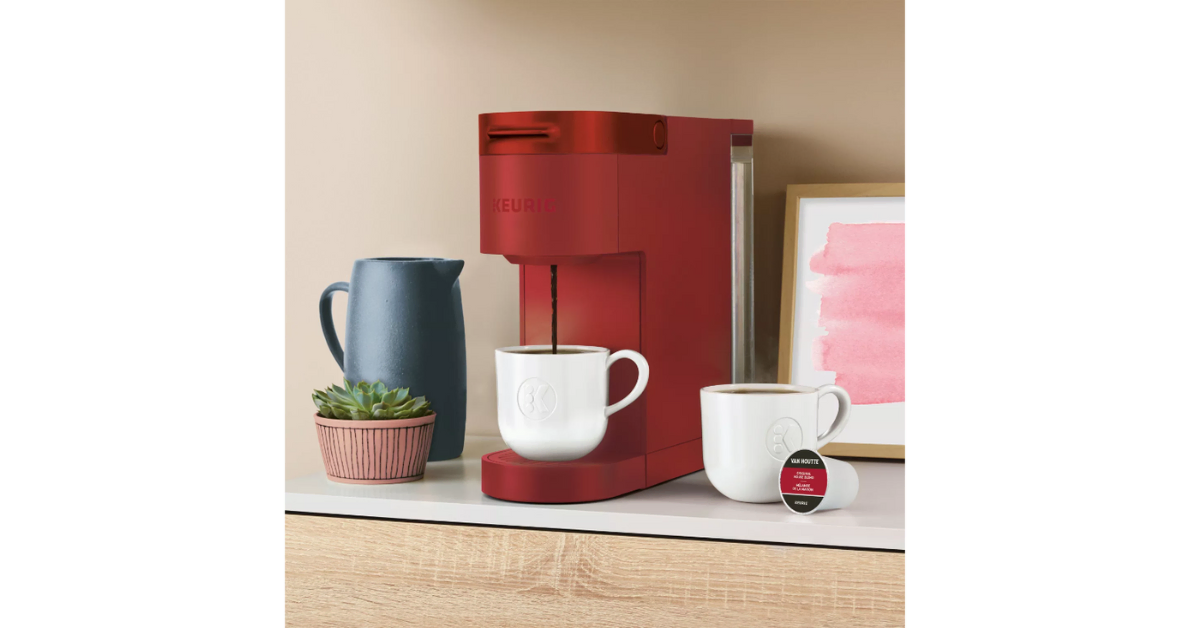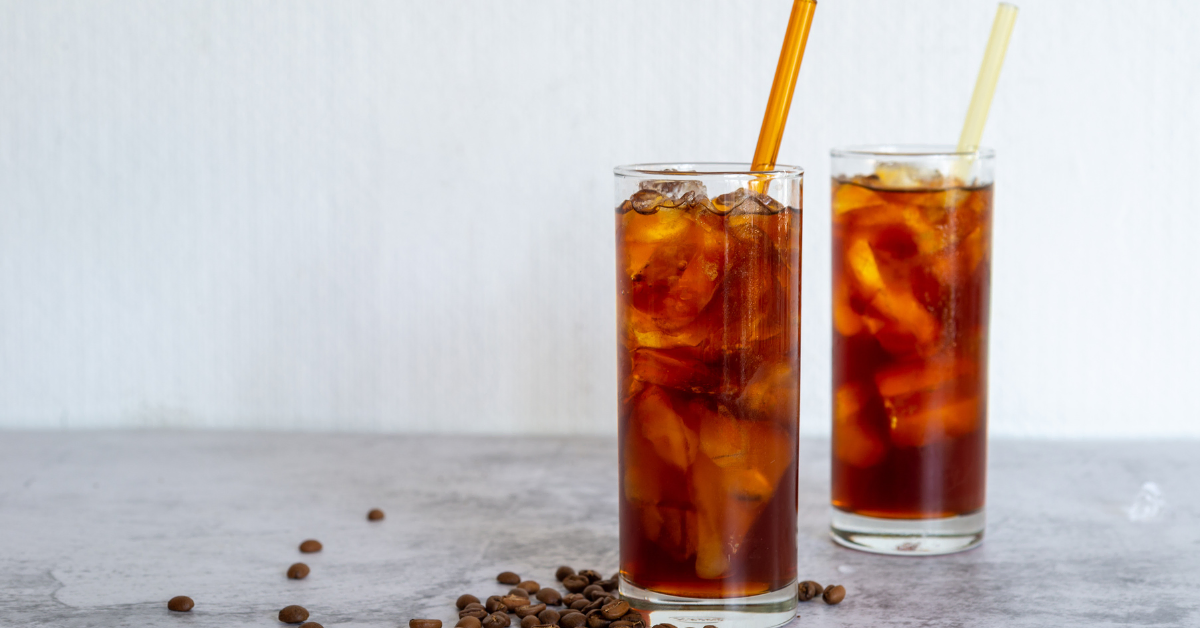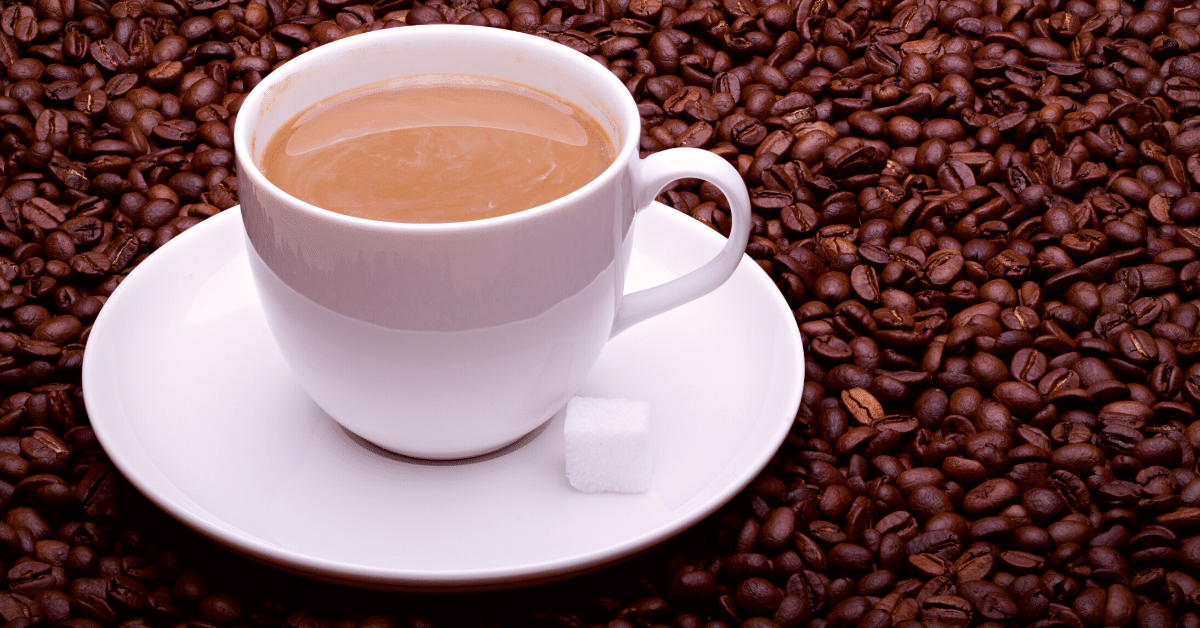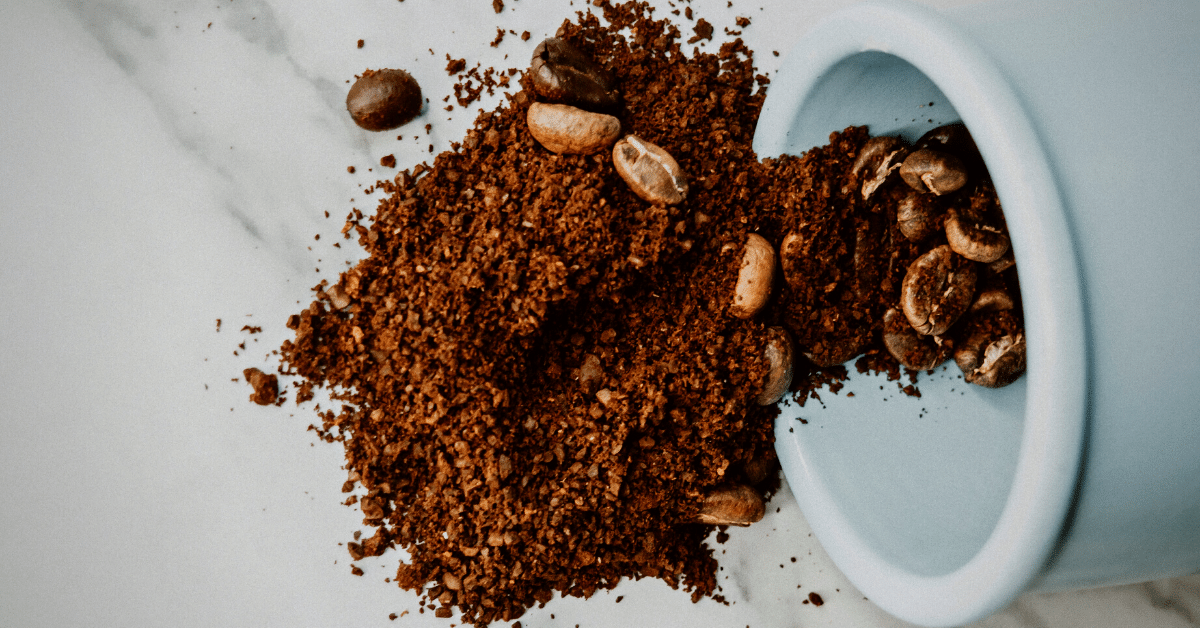Want to buy the best gourmet coffee? Check out our top choices and a buying guide so you can make a perfect pick for your special coffee drink.
In a rush? Our top pick for the best gourmet beans is the Lifeboost Ethiopian Yirgacheffe Limited Collection.
Tired of all coffee tasting the same?
If you’re willing to splurge, then you should definitely try gourmet beans.
It’s time to take your coffee seriously.
Which is exactly what I did.
After many hours of research and even more sips of coffee, I managed to pick the best gourmet coffee on the market today.
Let’s see what those premium beans are and how to choose the best coffee for you!
Best Gourmet Coffee: Top 9 Picks
- Lifeboost Ethiopian Yirgacheffe Limited Collection (Best Overall)
- Volcanica Yemen Peaberry Coffee (Best Peaberry Coffee)
- Koa Private Reserve Medium Roast Whole Bean 100% Kona Coffee (Best Kona Coffee)
- Lifeboost Pacamara Limited Collection (Best for Acidity)
- Stumptown Guatemala El Injerto Pacamara Whole Bean Coffee (Best for Milk)
- Volcanica Jamaican Blue Mountain Wallenford Coffee Beans (Premium Pick)
- Lifeboost Wild Fermented Wine Infused Coffee (Best Flavored)
- Death Wish Dark Spirits Chocolate Rum Ball Coffee (Best for Sweetness)
- Royal Kona Coffee Chefs of Hawaii Gourmet Coffee Tripack (Best Mix Pack)
Lifeboost Ethiopian Yirgacheffe Limited Collection
Ethiopian Yirgacheffe is considered to be one of the highest-quality Arabica coffee in the world. High altitude, tropical climate, and nutrient soil create perfect conditions for growing a great coffee.
And, of course, they’re hand-picked, ensuring only the best of the best get into the final product.
Ethiopian Yirgacheffe tastes best when roasted to a medium level, which is the case here. Medium roast perfectly accentuates the delicate fruity and floral taste with just a hint of wine notes.
The body is medium-light, and it’s perfect for the pour-over method. It really lets the prominent notes of peach and strawberry shine.
However, this flavor profile doesn’t work that great for espresso. Even though it’s medium-roasted, the shot is rather crisp and with a slightly thinner body.
Lifeboost coffee is fair trade and organic coffee. These certifications ensure that the production process is transparent, sustainable, and ethical.
On top of that, this coffee is 3rd party tested for toxins and chemicals. So you really know what does and what doesn’t go in your cup.
Pros
- It’s coffee from a single origin, meaning you get unique, bright, and unblended flavor notes
- Comes in a resealable bag, so you don’t need to transfer it to a container
- Organic and fair-trade, which means it’s sustainably produced
- Roasted per order, so you always get a fresh bag
Cons
- The flavor and body make this coffee unsuitable for espresso
Volcanica Yemen Peaberry Coffee
In case you don’t know, peaberry isn’t a coffee bean variety but a mutation. Unlike other coffee beans that grow in pairs inside the cherry, peaberry beans grow solo. This causes them to be denser and juicier, hence their popularity.
Now, this product contains peaberry coffee grown in Yemen’s Raimah and Hajjah regions. We’re talking about farms situated 1,600+ feet above sea level, where coffee beans slowly ripen before being hand-picked.
What does that mean? Well, it means you get 100% peaberry beans in the product, which are of much finer quality than the rest of the crop.
As for the coffee it makes, it’s bright and smooth with a rich body. It’s also sweet and slightly winey, with undernotes of brown sugar, caramel, red grape, and spiced fruit.
What I really like about Volcanica coffee is that you can get it as either whole bean or preground. And in the case of the latter, you can choose between espresso, drip, and a French press coffee ground.
Keep in mind that even though it’s medium-roasted, the flavor profile and body resemble dark roast more. And for that reason, pour-over coffee might not taste that great.
Pros
- Beans are hand-picked, which ensures the coffee is 100% peaberry
- Single-origin, so you can taste individual notes of coffee beans
- Sold as whole beans or ground coffee, depending on your preference
- The bag features a one-way valve, allowing beans to degas without going stale
Cons
- The intense flavor profile doesn’t work that great for pour-over
Koa Private Reserve Medium Roast Whole Bean 100% Kona Coffee
Of course, this list wouldn’t be complete without the most popular gourmet coffee – Kona coffee!
What makes Kona coffee so special is that it only grows on the slopes of the Hualalai and Mauna Loa volcanoes in Hawaii. And for that reason, it’s very rare.
But another reason why it’s so popular is the flavor. Volcanic soil is packed with minerals that help coffee beans thrive.
Kona coffee is bright with notes of honey, brown sugar, and chocolate. It’s slightly acidic, with a slightly nutty aftertaste. Roasted to a medium level, it has a rich body and a smooth texture.
I’m really impressed by the fact that this Kona coffee isn’t overpriced. Of course, gourmet coffee is expensive, but this one doesn’t hurt your wallet that much.
But I guess that’s mainly because the packaging is not that great. The bag features a tie tin for resealing after use, but that thing doesn’t keep it airtight. So you should have an airtight container ready once you open the bag.
Pros
- The flavor profile pairs well with milk or creamer
- The body and flavor make this coffee suitable for a variety of brewing methods
- 100% Kona, so it has an authentic flavor
- Relatively affordable compared to most picks on this list
Cons
- The tin tie doesn’t keep the bag airtight, so you should transfer the coffee to a container
Lifeboost Pacamara Limited Collection
If you like your coffee crisp and bright, you’ll love Pacamara. This type of coffee is a cross between two Arabica varieties, and it takes only the best of them. As a result, we get coffee beans that make a premium cup of coffee.
Pacamara coffee has a medium body and creamy texture. But the flavor profile is really something else. It’s rich and complex, with notes of cinnamon, chocolate, raspberry, and orange. Its surprisingly sweet undertone contrasts with the lemon acidity.
This interesting flavor profile shines best when prepared with pour-over, French press, or drip method. What’s more, this coffee also works surprisingly well for espresso making.
However, one thing I don’t recommend is making a cold brew coffee with it. The rich acidity will be lost, and the flavor will be somewhat bland.
I must say, I really like the Lifeboost packaging. The bag features a zip, so you can use it for storing coffee without it going stale.
I also like that they roast per order. That means you always get a bag of coffee that was roasted no more than a few days ago.
Pros
- A complex but sweet flavor profile works with most brewing methods
- Roasted per order, so you get your coffee fresh
- 3rd party tested for toxins, so you know what you’re drinking
- Resealable packaging, so you don’t need to transfer the coffee to a container
Cons
- Not suitable for a cold brew as it kills its distinctive acidity
Stumptown Guatemala El Injerto Pacamara Whole Bean Coffee
The same type of beans will taste differently depending on where they’re grown and how they’re processed. So even if you had Pacamara before, this coffee by Stumptown might be a different experience for you.
Pacamara is mostly cultivated in El Salvador, but the Stumptown coffee roaster gets its share from Guatemala. Pacamara from Guatemala is grown at a higher altitude. That’s why it’s more complex and robust compared to its neighboring counterpart.
This particular coffee combines notes of tropical mango with crisp lemon and lime, rounded with a floral finish. It’s slightly less sweet than typical Pacamara, and that’s what makes it unique.
Medium-roasted, this coffee is best for pour-over, but you can definitely use it for other brewing methods as well.
It might seem counterintuitive, but this zesty flavor profile actually works really well with milk or creamer. In the case of plant-based alternatives, coconut milk is a pair made in heaven.
One thing I’m not a big fan of is the packaging. I like how Stumptown uses paper to make the packaging more sustainable, but it’s not very thick. If not handled carefully, the bag can easily rupture.
Pros
- Roasted weekly, so you always get a fresh bag of coffee
- Direct-trade certified, meaning the production process is transparent and ethical
- One of the more affordable gourmet coffees on this list
- Palatable on its own but also works well with milk or creamer
Cons
- The packaging is flimsy, so it can easily get damaged
Volcanica Jamaican Blue Mountain Wallenford Coffee Beans
Now we’re getting into even more high-end coffee. The Blue Mountains of Jamaica are the perfect place for growing Arabica Typica. This variety is very low-yielding but makes an excellent cup of coffee, hence the high price.
Elevations of 2,000+ feet, rich soil, and constant rainfall allow beans to ripen slowly, which makes them more flavorful. This coffee is intense but balanced. It’s sweet, with light acidity and prominent notes of orange peel and crisp chocolate.
The flavor profile shines best with a medium roast, which is the case here. But even though it has a bold taste, don’t expect this coffee to give you an intense energy kick. Typica is much milder compared to most Arabica varieties.
If you don’t own a grinder, that’s not an issue. All Volcanica products can be bought as whole beans or ground coffee. In the case of the latter, you can choose between espresso, drip, and French press grind size.
You can also get this coffee in bags of 3 and 5 pounds, aside from the standard 16 ounces. This is handy if your whole household enjoys coffee as much as you do.
Pros
- Medium-roasted, so it’s suitable for most brewing methods
- Naturally sweet, which means you don’t need to add sweetener
- Light acidity, so it’s gentle on your stomach
- Sold as whole beans or ground coffee, depending on your preference
Cons
- It’s not as caffeinated as other picks on this list, so you won’t get an intense energy kick
Lifeboost Wild Fermented Wine Infused Coffee
Here’s something for wine lovers out there – wine-infused coffee. To be honest, I was quite skeptical at first, but this combination actually works exceptionally well.
For this product, Lifeboost uses single-origin beans grown in the tropical mountains of Central America. Climate, elevation, and deep shade cause the beans to mature slowly. As a result, they develop a juicier and more complex flavor profile.
Then, those beans are soaked in wild wine, which relies on naturally occurring yeast for fermentation. This means there are no preservatives or any kind of additives added. Of course, that also means there’s no sugar or calories, so you can enjoy this coffee as much as you want.
Even though it’s combined with wine, this coffee is naturally low in acidity. This makes it suitable for people who don’t like sharp coffees.
So how does the wine-infused coffee taste? It’s full-bodied and smooth, with prominent fruity notes and a hint of French oak.
Not going to lie. This flavor is not for everyone – especially not for those who don’t enjoy red wine.
Pros
- Even though it’s wine-infused, it’s alcohol-free, which means you can enjoy it at work
- Fair-trade certified, so it’s produced sustainably and ethically
- Low in acidity, meaning it’s smooth on your palate
- Roasted before shipping, so you get a fresh bag every time
Cons
- The taste is very specific, so coffee lovers who don’t like red wine won’t enjoy this flavor
Death Wish Dark Spirits Chocolate Rum Ball Coffee
Now, this coffee is a true explosion of flavors. If you like chocolate rum balls, you’ll love this Death Wish coffee. But don’t worry, it’s non-alcoholic, so you can drink it before heading to work.
Death Wish is known for making strong coffee, and this is definitely it. This coffee will give you the much-needed energy kick in the morning.
The production process is rather interesting. The beans are aged in oak rum barrels for weeks. Then, it’s roasted to a medium level to bring out the best of the flavor. So what you get is a sweet, run-flavored coffee with hints of chocolate and vanilla.
Really, I love everything about this coffee. The only thing I can complain about is that it takes a long time for a restock. Since we’re not talking about low-yielding beans, I don’t understand why it’s out of stock for a long period of time.
But hey, at least you can be sure the beans you get are fresh!
Pros
- Intense and caffeinated, so it will give you an energy boost
- The flavor profile makes it suitable for any brewing method
- Very sweet naturally, so it’s palatable without milk or sweetener
- It’s aged in oak rum barrels, but it’s still non-alcoholic, meaning it’s suitable during working hours
Cons
- Made in small batches, so it’s often out of stock
Royal Kona Coffee Chefs of Hawaii Gourmet Coffee Tripack
Hawaii coffee is not just about Kona. The unique combination of soil and climate makes the islands perfect for growing any bean variety.
This pack contains three different blends:
- Alan Wong’s Medium Roast 10% Ka’u blend
- Roy’s Pacific Roast 10% Kona blend
- Sam Choy’s Volcano Roast 10% Kona blend
Basically, we have three chefs giving their take on what Hawaiian coffee should taste like. And to be honest, I’m not sure what I like more.
Ka’u coffee is smooth, low in acidity, and with prominent notes of brown sugar and citrus.
Kona, on the other hand, is light and sweet, with bright acidity and chocolate undernotes. Both blends are roasted medium-dark, with Volcano Roast being slightly darker of two.
For Hawaiian coffee, this pack is rather affordable. This is great if you’re trying coffee from this region for the first time.
However, I do wish the coffee wasn’t just a 10% blend. The rest consists of Arabica beans from another, unknown location. That means you don’t actually get the completely authentic Hawaiian flavor.
Pros
- Three different blends in a pack, so you have the versatility
- Affordable, allowing you to enjoy gourmet coffee without breaking the bank
- Preground, meaning you don’t need a grinder
- Medium-roasted, so the flavor profile is balanced
Cons
- It’s a blend, so you don’t get the authentic flavor of Hawaiian coffee
Buying Guide to Gourmet Coffee
As you probably noticed, none of the products are labeled as “gourmet.” That, naturally, makes your job a bit harder. But don’t worry. In this section, we’ll cover everything you need to know before buying gourmet coffee.
What are gourmet coffee beans, anyway?
For the sake of the question, let’s think of coffee beans as you would think of wine.
Not all wine is the same. Factors that affect its quality include:
- Climate and weather
- Altitude and soil
- Plant variety
- Growing practices
- Processing practices
Well, these are all applicable to coffee as well.
Gourmet coffee is a type of specialty coffee that has a superior flavor profile. And that flavor profile is a result of the perfect combination of factors mentioned above. And for that reason, this coffee often comes with a premium price tag.
Now, what do these factors mean in practice?
The beans are grown in more than favorable regions in the so-called Coffee Belt. In this region, the climate is tropical, and the weather is warm with lots of rainfall.
Most regions are at a high elevation where the soil is rich in nutrients.
As for the plant variety, it’s no secret that Arabica is considered to be superior to Robusta, so most gourmet coffee is 100% Arabica.
Of course, most gourmet coffee is also single-origin. Since they’re coming from the same farm, every bean in the packaging tastes the same. This allows you to truly enjoy the authentic flavor of certain terroir.
Finally, gourmet coffee products are typically more sustainably grown. Often, they are certified, ensuring some (or all) parts of the production process are subject to strict standards or controls.
Type of beans used in gourmet coffee
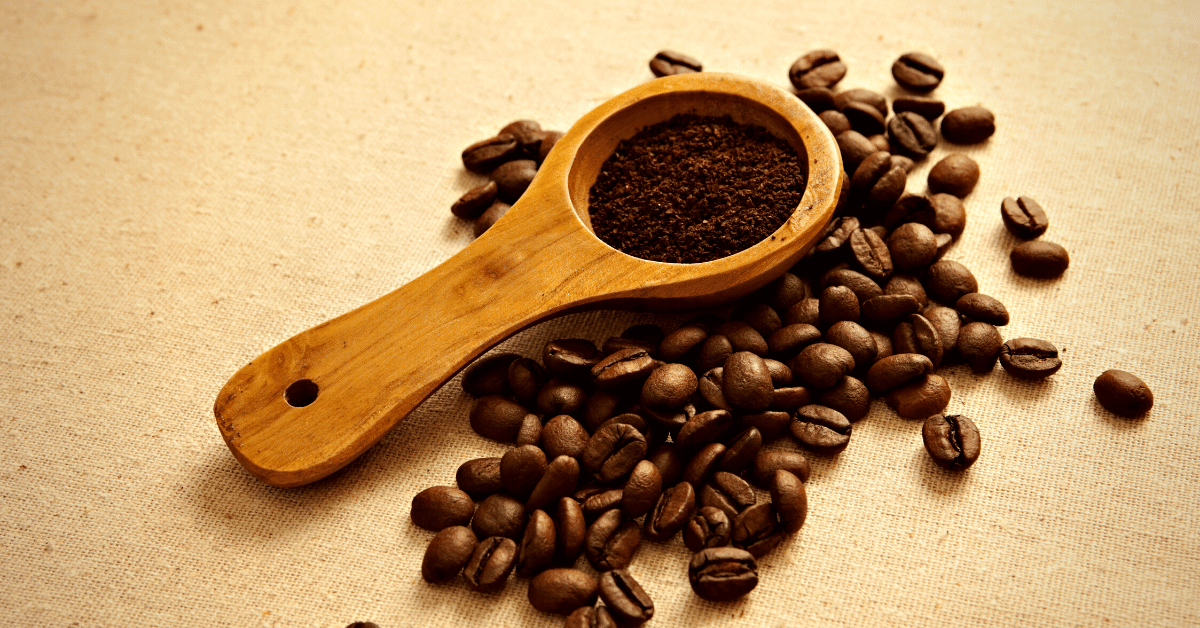
As I’ve said, gourmet coffee almost always consists of 100% Arabica beans. But Arabica is a large family of coffee beans.
So naturally, we have to go deeper.
What makes gourmet coffee, well gourmet, are rare coffee varietals.
Some of the most well-known are:
- Kona coffee – these are Arabica beans growing in a tiny piece of the Big Island of Hawaii named Kona. Located on volcano slopes, this small area is just 1 mile wide and 30 miles long.
- Peaberry coffee – this is not actually a variety but a mutation. It can occur in any Arabica variety, but the most popular peaberry coffee is from Tanzania, Jamaica, and Brazil.
- Geisha coffee – these beans are extremely hard to cultivate as they require special conditions. Only a few countries are successful in growing Geisha coffee.
The list goes on. And I guess there’s something delicious about products that are hard to come by. Just think of truffles.
If you have a passion for coffee-based dishes, read our article on what are Viennese coffee balls and give our recipe a try.
Quantity and price of gourmet coffee
Like anything else on the market, scarcity dictates the price.
But so does the production process.
In the case of gourmet coffee, we usually have both factors combined, hence the high price tag.
But the coffee quality and flavor definitely justify it.
Gourmet coffee is memorable. You might have had just a single cup of gourmet coffee in years, but I bet you’ll remember how delicious it was.
Now, because it’s harder to cultivate and produce, gourmet coffee is also sold in smaller quantities. So don’t be surprised that your favorite product is out of stock at some point.
Furthermore, they also come in much smaller bags.
However, it makes sense. Even gourmet coffee will taste bland when it’s old. And these premium coffee brands can’t allow consumers to drink coffee made from a stale bag.
And you don’t want that either. But with small bags sold in low quantities, there’s practically no chance you can buy a bag that was roasted half a year ago.
To Sum Things Up
High-end quality beans come from all parts of the world.
But if you are searching for the best coffee beans, you should definitely try the Lifeboost Ethiopian Yirgacheffe Limited Collection.
This coffee is delicate but very palatable. Whether you’re a coffee connoisseur or just a novice, you’ll enjoy it just as much. It’s suitable for most brewing methods, so you can prepare it in many different ways.
It’s also roasted per order, so you always get fresh beans!

